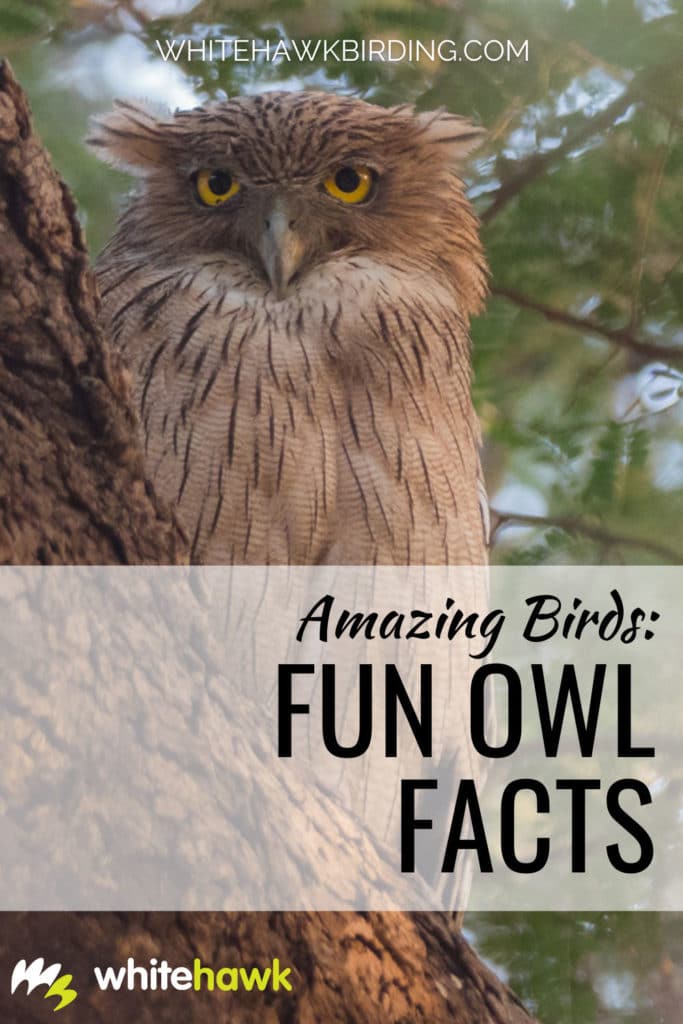Owls are fascinating birds. They tuck themselves away during the day and emerge at night to hunt in the darkness. We do not often see them due to their nocturnal lifestyle, but every sighting of an owl becomes a memory not soon forgotten. We often think of owls as mysterious creatures, but the truth is, they are well-studied, and much is known about the natural history of most common species found on our planet. They have many amazing adaptations for being top predators at night. And furthermore, they are pretty cool birds! Here are some fun owl facts to keep in mind the next time you’re out looking for an owl.
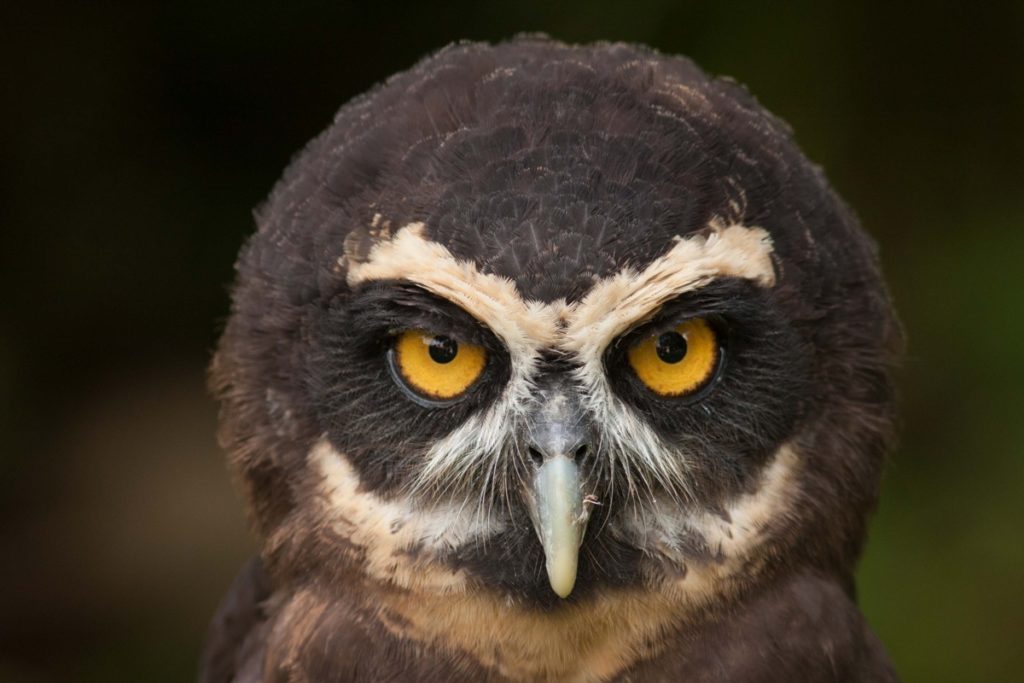
Fun Owl Facts:
- There are approximately 225 species of owls, however some authorities recognize up to 260 species
- Owls are found on all continents except for Antarctica
- Owls belong to the order Strigiformes, containing two families: Strigidae (true owls) and Tytonidae (barn owls)
- The earliest known owl fossil is Ogygoptynx wetmorei from North America, dated to the late Paleocene
- Cuba was once home to the now-extinct Ornimegalonyx, or Cuban Giant Owl. This possibly-flightless owl stood over 3 feet tall and is believed to be the largest owl ever to have existed.
- The lightest and smallest owl is the Elf Owl of North America, weighing a mere 40 grams and measuring only 12-14 cm in length
- The largest owl is the endangered Blakiston’s Fish Owl of far northeastern Russia and northern Japan, weighing up to 11 lbs. and having a wingspan of 2 meters
- Owls are primarily nocturnal, active at night. Some, such as the pygmy-owls, are diurnal and active during the day
- Owls are raptors, or birds of prey, and feed exclusively on other animals they catch and kill themselves
- They eat a wide variety of prey items including rodents, rabbits, birds, insects, and some even specialize in hunting fish!
- Owls are typically solitary birds, pairing up only during the breeding season
- A group of owls is called a parliament
- They have weak stomach acids and will regurgitate a pellet after eating, which contains all the bones, fur, and other indigestible parts of the animal it ate
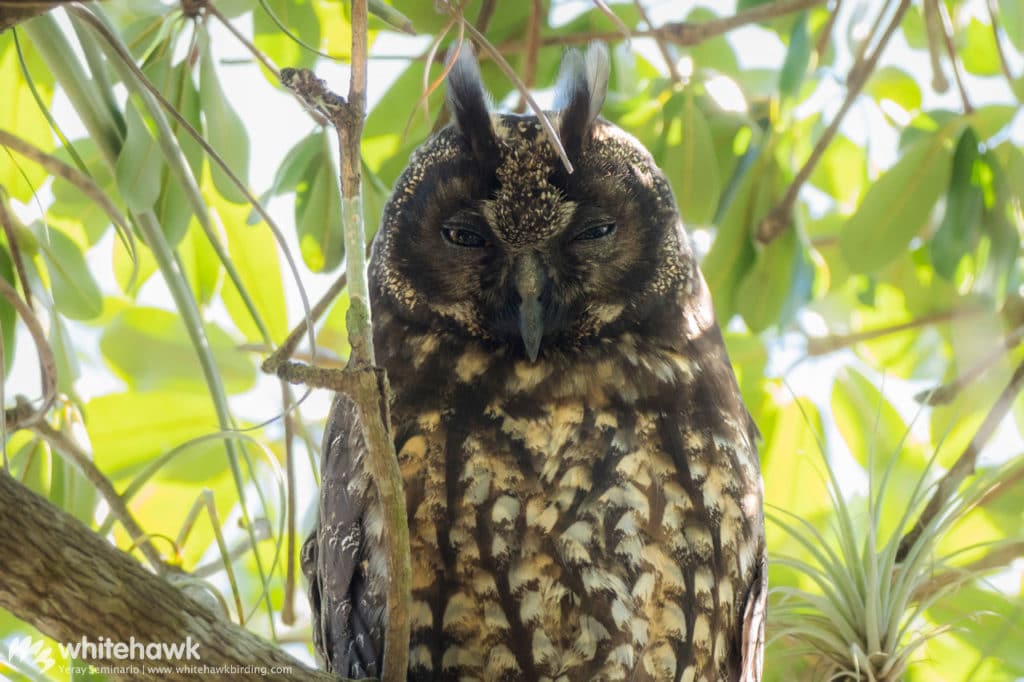
Fun Owl Facts: Amazing Adaptations
- Owls have specialized flight feather that muffle the sound of their wings and allow them to fly completely silently so they can sneak up on their prey
- Owls have incredible hearing, and thanks to their asymmetrical ears, they can hear sounds from every direction
- Many species have a well-defined facial disc of feathers that help direct sounds into their large ear openings
- Due to their excellent hearing, some owls can catch rodents underneath the snow, without even seeing them!
- Since owls hunt at night, their eyes are equipped with far more rod cells than cone cells. Rod cells are designed to pick up light, while cones are the cells that allow for color vision. As a result, owls likely do not see very well in color
- Owls have huge eyes in comparison to the size of their heads. If our eyes were as large as an owl’s in proportion to our heads, our eyes would be the size of softballs! An owl’s eye is not round, but rather elongated, and is held in the skull by a special bone.
- Because their eyes are so big, they are fixed in their sockets and cannot move. To look around, owls rotate their heads up to 270 degrees
- Owls have zygodactyl toes, meaning that two toes point forward and two toes point backward. This helps them to grab prey efficiently.
- Like other raptors, owls have sharp, hooked talons and very strong feet and toes for catching prey
- They are masters of camouflage. Many species of owls have long feather tufts (often erroneously called ear tufts, even though they don’t have anything to do with their hearing) on their head, which help them to blend in with their surroundings, breaking up the round head and body shape
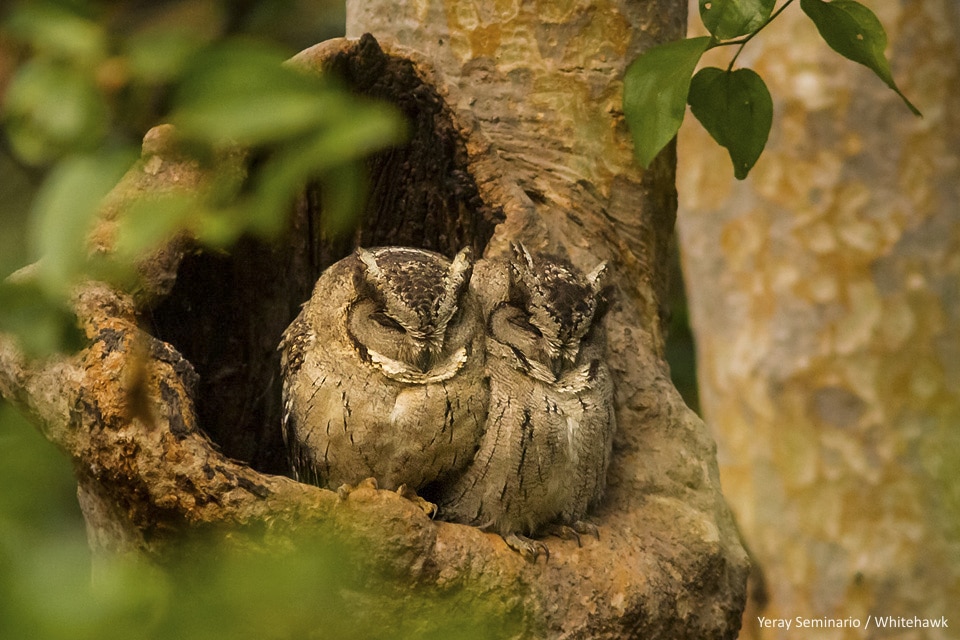
Fun Owl Facts: Owls in Culture
- Owls are seen in literature and in many cultures as symbols of wisdom
- Many cultures perceive owls as harbingers of doom and death, often associated with witchcraft and much superstition abounds regarding owls
- The Barn Owl had been used in English folklore to predict the weather. When a Barn Owl screeched, it was believed to mean that cold or stormy weather was coming
- In Native American culture, some people believe that owls are the souls of people and should not be harmed
- The Burrowing Owl is thought of as a protective spirit of Dakota Hidatsa warriors, whereas the Hopis regard the Burrowing Owl as their god of the dead and guardian of all underground things
- Dreaming of an owl signifies approaching death to an Apache. But to the Lenape, dreaming of an owl means that it will become their guardian
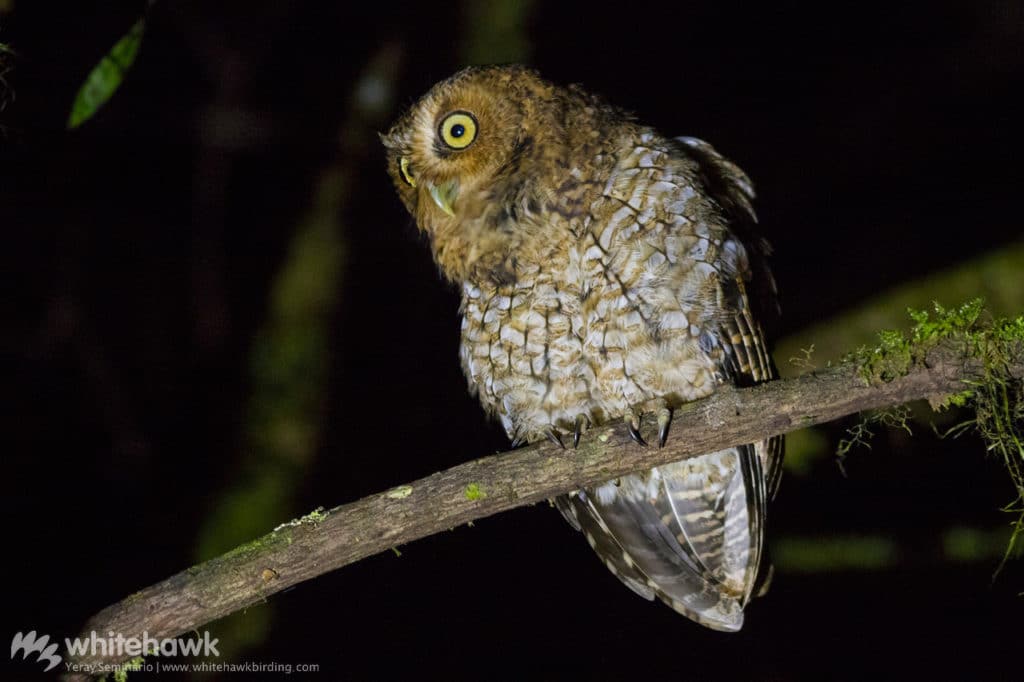
While it is enjoyable to read all these fun owl facts and learn about just some of the fascinating things about owls, we cannot forget about the importance of owls! They are important components of the ecosystems in which they live, serving as free, non-toxic pest control. A single Barn Owl can consume over 1,000 rodents in just one year. They are responsible for keeping a natural balance among predators and prey, ensuring the health of the environments where they live. Owls in literature and popular culture keep our imaginations flowing and our minds intrigued. Owls, like all birds, enrich our lives and well-being through the enjoyment of birdwatching and owling. We appreciate owls for the amazing creatures they are and the benefits they bring to us! Feel free to share your favorite owl photos and fun owl facts with us on our Facebook page.
~ Whitehawk Birding Team

